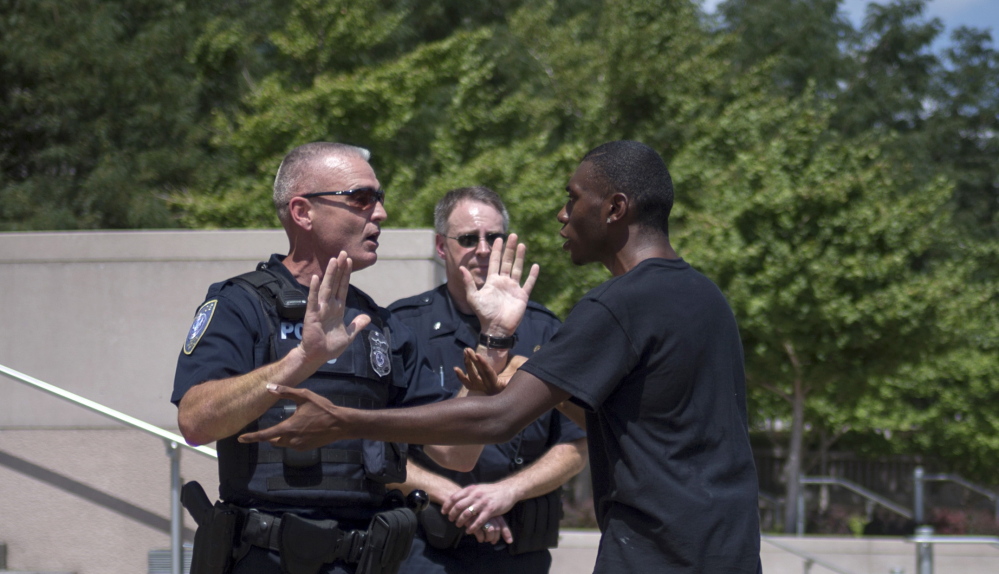FERGUSON, Mo. — Amid the firestorm of protests following the shooting of Michael Brown – an unarmed black teen who was killed by a white police officer – have come repeated calls for a more diverse police force.
But a growing body of research suggests that intractable circumstances of economics, culture and geography have more to do with shootings by police than the race.
According to the research, neglected minority neighborhoods that are poor and prone to violence are a hotbed for such shootings – regardless of the complexion of the police.
And while the number of police shootings can be reduced by better training, disciplinary action, policy and political representation, the broader societal issues that plague violent neighborhoods work against efforts to reduce police shootings.
Former St. Louis Police Chief Dan Isom recently said at a town hall meeting that cops are the “face of government” in poor neighborhoods that most people don’t venture into.
“Officers see (communities in need) every day and they become frustrated,” Isom said. “They seem to be the person on the front line trying to solve many of these social and economic problems.”
David Klinger, and other criminologists at the University of Missouri-St. Louis, including Isom, wrote an academic paper about 230 shooting incidents involving 315 St. Louis police officers between 2003 and 2012. Of those, about two-thirds of the shooters were white and one-third were black. According to the paper, the distribution was reflective of the police department during that period.
Of the known suspects police were shooting at in those cases, 92 percent of them were black. St. Louis is 49 percent black.
According to St. Louis police data for 2012 and 2013, 94 homicide suspects were black; two were white; one was Hispanic; and one was Asian.
Of 4,713 inmates sentenced in St. Louis who are in state prison, 598 are white and 4,083 are black.
“Race is not a predominant factor driving shootings,” said Klinger, a former police officer. “It’s violence in the communities.”
Canfield Green apartments – where Ferguson police Officer Darren Wilson, 28, shot Brown, 18, on Aug. 9 – and neighboring Northwinds Apartments seem to fit this bill. Residents at Northwinds, which has been subsidized by low-income housing funds, must earn no more than 60 percent of median income. Residents – most are black – have complained about crime and lawlessness, as well as mistreatment from police.
Send questions/comments to the editors.



Comments are no longer available on this story